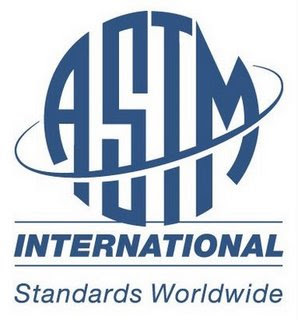Standardizing Additive Manufacturing Process Terminology

ASTM 42 is responsible for the new AM standardized terminology. Courtesy of ASTM
Latest News
June 13, 2012
I generally enjoy covering additive manufacturing (AM). One of the few sticky areas is process terminology. Different companies call the same process by wildly different names. For example, what Stratasys calls Fused Deposition Modeling (FDM), 3D Systems calls plastic jet printing, and the RepRap community calls fused filament fabrication (FFF).
The processes use an extruder head to lay down layers of thermoplastic to create objects in roughly the same way. More people recognize FDM than plastic jet printing or fused filament fabrication. Stratasys, which developed the technology, has trademarked the phrase Fused Deposition Modeling. As a result, 3D Systems and members of the RepRap project don’t call what is basically the same technology by the same name.
Juggling all these different-but-similar terms can be frustrating and confusing, not only for me, but for our readers and anyone else interested in 3D printing. If someone is just beginning to look into AM for a business, it is not helpful to have extraneous names floating around.
It appears that ASTM agrees with me. Chaired by Terry Wohlers, the terminology subcommittee has boiled down the myriad process names into seven standardized terms. The terms are as follows:
- Vat Photopolymerization
- Material Jetting
- Binder Jetting
- Material Extrusion
- Powder Bed Fusion
- Sheet Lamination
- Directed Energy Deposition
Vat Photopolymerization: An additive manufacturing process in which liquid photopolymer in a vat is selectively cured by light-activated polymerization. Stereolithography is an example of this process.
Material Jetting: An additive manufacturing process in which droplets of build material are selectively deposited. Objet’s PolyJet is an example of this process.
Binder Jetting: An additive manufacturing process in which a liquid bonding agent is selectively deposited to join powder materials. The ZPrinter line uses this process.
Material Extrusion: An additive manufacturing process in which material is selectively dispensed through a nozzle or orifice. Stratasys’ previously mentioned FDM technology is an example of this process.
Powder Bed Fusion: An additive manufacturing process in which thermal energy selectively fuses regions of a powder bed. EOS’ direct metal laser sintering is an example of this process.
Sheet Lamination: An additive manufacturing process in which sheets of material are bonded to form an object. The Mcor Technologies printers use this type of process.
Directed Energy Deposition: An additive manufacturing process in which focused thermal energy is used to fuse materials by melting as they are being deposited. The Optomec LENS systems are an example of this process.
None of this is just an exercise in academia. Standardized terminology is part of a maturing industry.
“If we look at other industries, you’ve got forging, which is a subset of metal deformation,” said Dr. Stucker “When people came up with forging, they didn’t call it a metal deformation process. That was something that came up later and they categorized forging and rolling and everything underneath it. We needed to do something similar in the additive manufacturing community.”
Hopefully the new terminology will catch on sooner, rather than later, bringing some simplicity and clarity to the AM conversation. Readers of the annual Wohlers Report will find the new terminology already at work in that publication.
Subscribe to our FREE magazine, FREE email newsletters or both!
Latest News
About the Author
John NewmanJohn Newman is a Digital Engineering contributor who focuses on 3D printing. Contact him via [email protected] and read his posts on Rapid Ready Technology.
Follow DE






